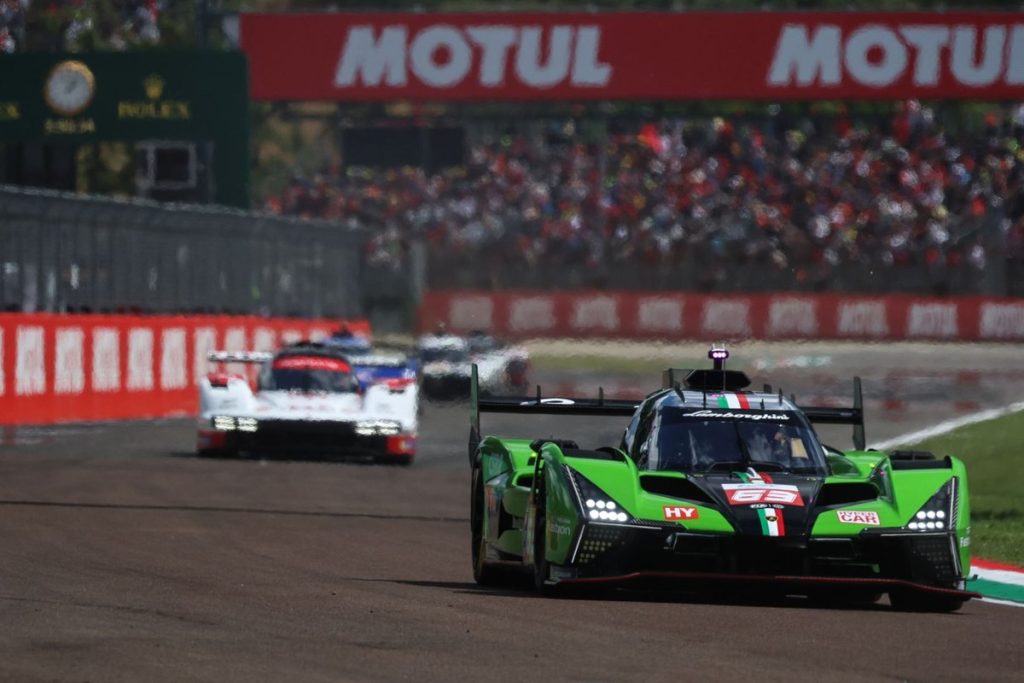Starting their World Endurance Championship Hypercar programmes one year behind the likes of fellow LMDh entrants Porsche and Cadillac was always likely to mean a period of playing catchup for Alpine and Lamborghini in 2024. Two rounds into the season, that prediction has been borne out and both marques are experiencing similar growing pains. In both camps, the message is very much the same – we need time.
Although LMDh machines use a spec rear-axle hybrid system, compared to the bespoke systems used on the four-wheel-drive Le Mans Hypercars from Toyota, Ferrari and Peugeot, they are still enormously complex beasts. Getting its 963s working efficiently was not the work of a moment for the factory Penske Porsche Motorsport team that has run two cars on both sides of the Atlantic in the WEC and IMSA SportsCar Championship since last season, despite a totally open book for information sharing and regular crossover of senior personnel between the two teams.
PPM’s victory in the WEC season-opener in Qatar demonstrates that an LMDh car can beat the LMHs that won every race last season. But the timescale involved in achieving that feat underlines why Alpine and Lamborghini have little choice but to play down expectations at this stage.
Lamborghini chief technical officer Rouven Mohr has declared that «2024 is really a learning year for us» as the marque tests the water in prototype racing with its lone SC63 entry, developed in collaboration with Ligier Automotive and run by partner team Iron Lynx with significant input from Prema.
«We are still at the beginning in the understanding of the car,» Mohr conceded at Imola before Mirko Bortolotti, Daniil Kvyat and Edoardo Mortara raced to 12th. «Before we had the first race in Qatar, we had more or less two performance tests, because the other tests we did were basic functional development.
«It’s not one thing that is missing, it’s really fine-tuning. The competition level in this category is so high that you need the time to fine-tune and it’s not that you find, okay, now I forgot to make this and then you find two seconds, it’s not the case. It’s really the set-up of all the small parameters.»
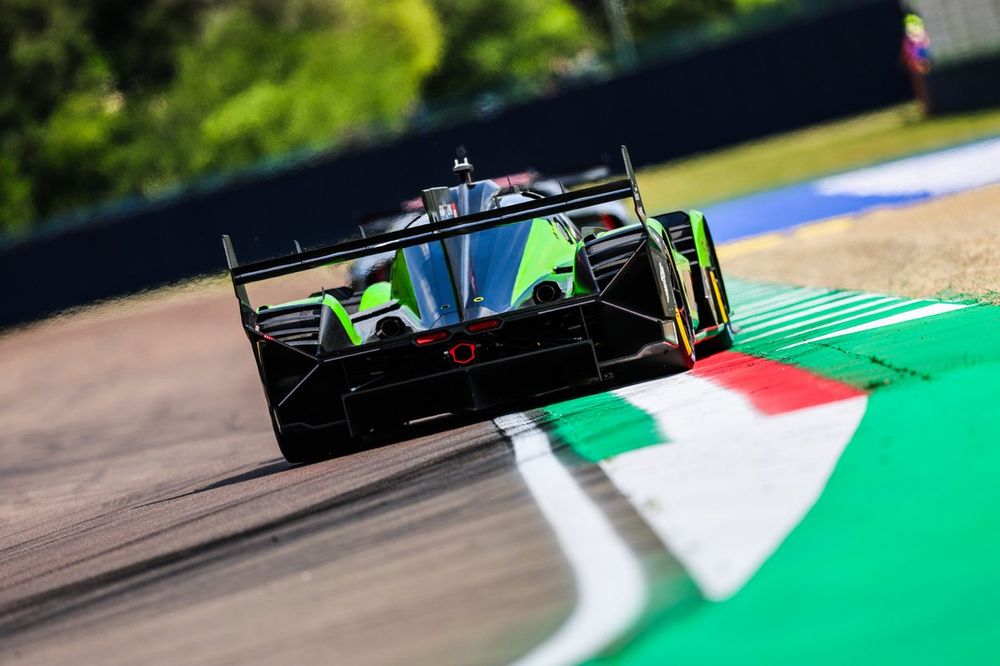
Lamborghini was still getting to understand its SC63 at the opening pair of races
Photo by: Emanuele Clivati | AG Photo
The noises coming from the Signatech team that runs Alpine’s two A424s, developed together with ORECA, follow a near-identical tune.
«We are at the start of the project so each day we have something to learn,» remarked team principal Philippe Sinault in Imola. «But the base, the foundations are good now. At Imola, we learn each lap also in the new environment. Our target is to learn as much as possible and already as soon as possible.»
BMW is in a similar boat having rejoined the WEC this year, but its WRT-run M Hybrid V8 LMDh does at least have a season of racing under its belt in IMSA with Team RLL to iron out teething problems. Now boasting two-car programmes in both series, BMW’s learning curve should level out more quickly than two marques that are much closer to the start of their respective journeys, both having only rolled out last August for the first time.
Perhaps it should come as little surprise that BMW has the best result of the WEC newcomers to date, courtesy of a sixth-place finish in mixed conditions at Imola with Rene Rast, Robin Frijns and Sheldon van der Linde. Lamborghini has yet to trouble the points, while Alpine’s #35 managed seventh place in Qatar after a canny fuel-saving strategy allowed Ferdinand Habsburg, Paul-Loup Chatin and Charles Milesi to complete one fewer stops than their rivals.
«There is a big step between the warming process in LMP2 compared to the Hypercar. It’s much more difficult. If you push, you can be a hero, but in one tenth you can be a zero»
Paul-Loup Chatin
But nobody at Alpine was getting carried away after a Qatar debut that Sinault admitted was «maybe better than we expected». Imola was a tough weekend for the French squad, as both cars were embroiled in a first-lap tangle and each received post-race penalties for drive time infringements. Following a disappointing qualifying, Alpine driver Nicolas Lapierre revealed that the track had «underlined one of our weaknesses».
«It’s the first time we ran on a track with so many bumps and kerbs, it was not part of our testing programme because it’s so specific that we prefer to focus on tracks that we will find more in the season,» he said.
When asked by Motorsport.com if Alpine had identified circuit characteristics that suit the car, Sinault replied «we are not really focused about the lap time at Imola».
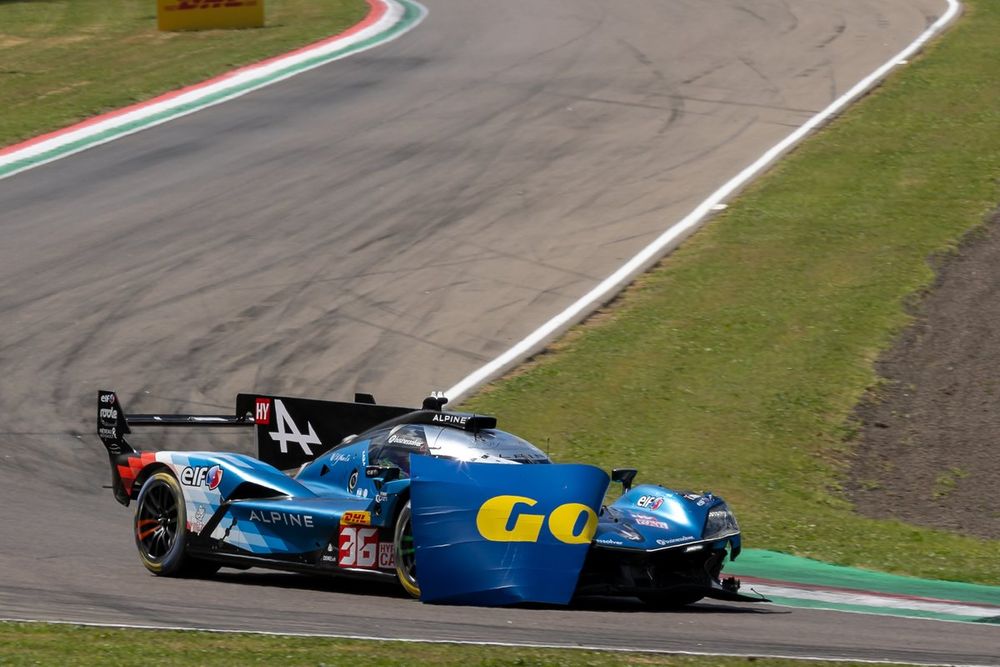
After an encouraging start in Qatar, Alpine’s progress was stalled at Imola
Photo by: Paul Foster
«In the end, Imola is not the key point for us,» he added. «We have to have a global overview, and the technical key points understanding to warm the tyres, but also energy management and so on.»
While it is correct to note that both teams behind Alpine and Lamborghini are not new to bringing tyres up to temperature from cold since the WEC’s ban on blankets was introduced for 2023, with Signatech and Prema present in LMP2 last year, the Michelin used in Hypercar is a very different tyre to the Goodyears in P2. And it goes without saying, the non-hybrid, normally aspirated ORECA 07 is a very different car.
Chatin explained that getting on top of the tyres is «one of the priorities» for Alpine currently, but that gaining the requisite understanding is taking time.
«There is a big step between the warming process in LMP2 compared to the Hypercar,» he said. «It’s much more difficult. If you push, you can be a hero, but in one tenth, you can be a zero because you lost the car. Right now, it’s one of the most important topics, to be better on that.
«We saw some teams like us, some teams are maybe a bit better than us right now, so there is a big way to improve. It’s not an easy part of the job for the driver. It’s not so obvious how we can improve it. Of course, we can play with the rollbar, we can play with the set-up, with the traction control to improve it, to give more confidence to the driver, because right now it’s difficult to judge the limit.
«If you stay under the limit it’s okay, but you are slow and the slower you are, the longer it is to warm the tyres and to bring the tyre in the good window. But as soon as you over-push a tiny bit, you can lose the car just like that. So it’s a part where we have to work.»
Lamborghini has to overcome similar issues too. It triple-stinted tyres at Imola to minimise warming issues in the race’s tricky mixed conditions.
Not only are both one year behind the curve on this topic, but it also doesn’t help that compared to Porsche and BMW, both Alpine and Lamborghini have limited data sets to work from. While Alpine’s two-car team is competing exclusively in the WEC, Lamborghini has divided its efforts between single-car programmes across the WEC and IMSA for its endurance rounds (although both cars will run at Le Mans).
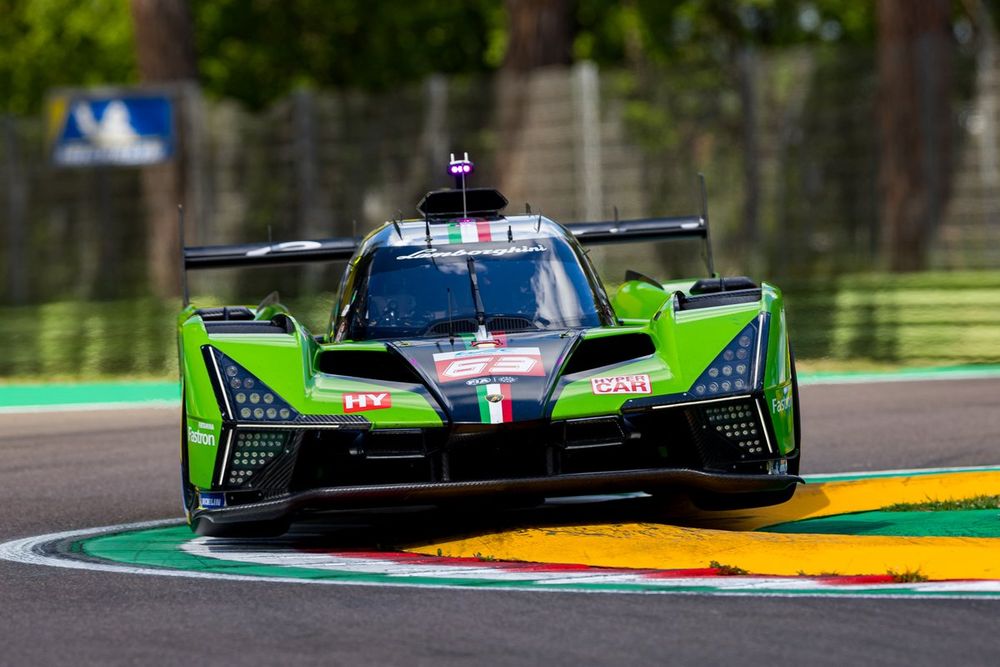
Lamborghini has a sole SC63 in both the WEC and IMSA this year — but both cars will contest Le Mans
Photo by: Paul Foster
Mohr acknowledges that «from the pure development perspective it’s a disadvantage» in Lamborghini’s development curve to run only a single SC63 in the WEC. He describes this as a «pragmatic decision» borne of a desire to make a «clear commitment» from the outset to both the WEC and IMSA – North America is a vitally significant market for the brand – while not overstretching its resources.
«We have not [got] the internal capabilities and capacities especially to deal with two cars here, two cars there,» said Mohr. The German later stressed that a decision on expanding to two cars has yet to be made, adding that «we don’t want to disturb ourselves too much about the side discussions» regarding the expectation that manufacturers will have to run two cars to secure WEC entries for 2025.
«We do it step-by-step,» he explained. «It doesn’t make sense also now to shoot over, that we have a lot of cars on the grid and we are not able to deal with the cars. This is, in the end, counterproductive. We have to be a little bit focused because otherwise you risk losing yourself and you run in 10,000 directions and this is ineffective.»
«Knowing how complicated the set-up philosophy is, you need at least one season of learning, it’s clear»
Rouven Mohr
The Italian manufacturer had two notable setbacks in the build-up to Qatar. A testing crash at Paul Ricard cost it over a month of development, then in March came the unexpected departure of motorsport boss Giorgio Sanna, who can be regarded as the LMDh programme’s architect. Mohr has since held down the role of interim motorsport boss alongside his day-to-day duties and is clear that the time-sapping commitment of managing customers and organisation of the Lamborghini racing series means «it doesn’t make sense to combine the roles» longer-term.
«If you ask me if this is a permanent solution, for sure it is not,» he said. «But we take time to select the adequate successor. We are carefully selecting the right person and then I make the handover back again.»
Mohr is encouraged that the SC63 has so far run «without any big problems» in the WEC, which he believes is a validation of Lamborghini’s in-the-loop simulation tools. He has identified its driveability as a strength as the drivers are «on a very close delta» and reckons the SC63’s downforce «is also strong».
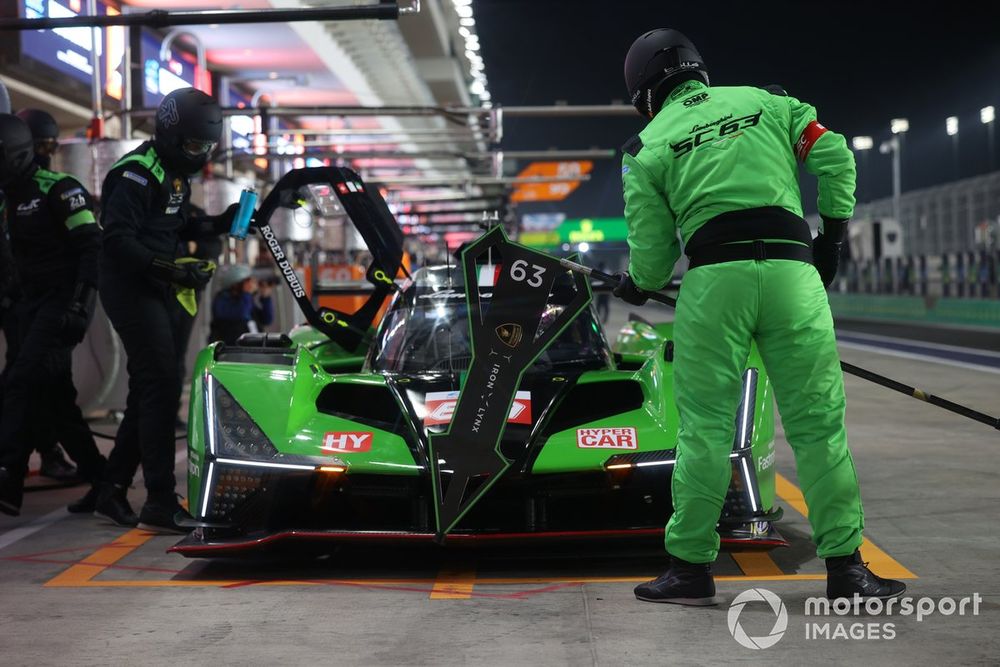
Unlocking the perfect set-up appears to be Lamborghini’s biggest challenge so far
Photo by: JEP / Motorsport Images
But this comes with the caveat that Lamborghini has yet to find the best set-up compromise between aerodynamic performance, mechanical grip and traction control – all of which are closely interlinked – and is still coming to terms with how these set-up variations influence the tyres. Although the car’s hardware is homologated, making the software more efficient and improving set-up understanding is an ongoing task.
«To find the optimum of this triangle, this is a huge job that is much bigger than a GT3 car,» Mohr noted. «These cars are quite heavy, much heavier than the old LMP1s, but they also have a huge downforce level. This generates new challenges from the pure set-up understanding.
«Knowing how complicated the set-up philosophy is, you need at least one season of learning, it’s clear. And the set-up is the main focus for development.»
It will be a question of time, miles and stumbling over hurdles already cleared by their rivals before Alpine and Lamborghini are ready to make good on their hard work against the strongest competition at the front of the WEC grid in its modern history. On the point of tyre warming, Sinault’s plea hit at the crux of the matter.
«It’s a key point of our category, so please give us some more time to have a better understanding of that,» he said. «We are really focused on that. We learn each time.»
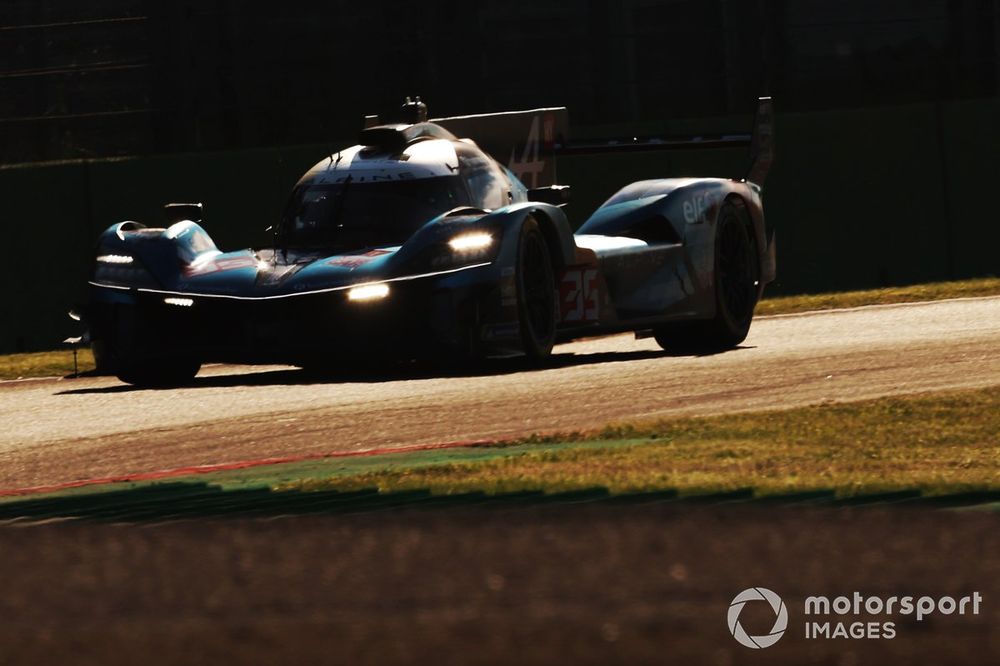
Can Alpine or Lamborghini challenge for the top spots before the end of 2024?
Photo by: JEP / Motorsport Images
